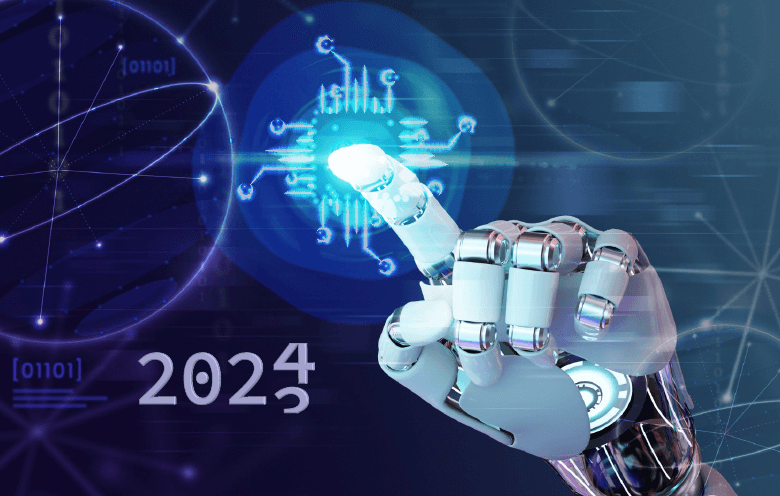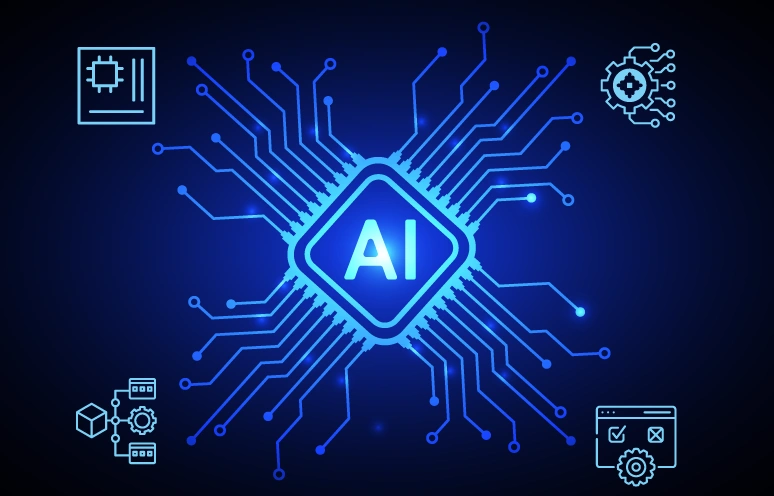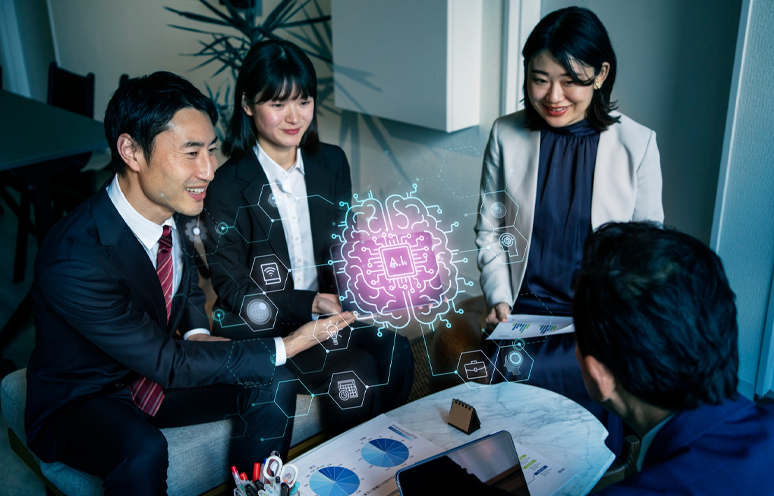ChatGPT and other generative AI tools have taken the world by storm, but what does the future of generative AI look like?
Businesses are gradually realizing the potential of generative AI integration. From creating personalized medical treatments to developing new forms of art and entertainment, GenAI has the potential to revolutionize many industries.
Gartner predicts that by 2026, over 80% of enterprises will have used GenAI APIs and models and/or deployed GenAI-enabled applications in production environments.
While ChatGPT and other generative AI tools have generated a lot of hype recently, they’re just the beginning. In this blog post, we’ll explore the top 6 generative AI trends to look forward to in 2024 and beyond. These trends point to a future where GenAI is used to create truly innovative and groundbreaking products and experiences.
1. More powerful and versatile generative AI models
Generative AI models are becoming increasingly powerful and versatile, capable of generating text, code, images and other creative content that is indistinguishable from human-created work. In near future, we can expect to see even more powerful and sophisticated generative AI models emerge, with new applications in a wide range of fields.
GPT-4 is the next generation of the popular GPT language model. It was released to a select group of users in March 2023, and OpenAI has been gradually rolling it out to more users since then.
GPT-4 is expected to be significantly more powerful and versatile than GPT-3, with new capabilities in areas such as code generation, translation and creative writing.
2. Generative AI for augmented reality apps and services
GenAI has the potential to revolutionize augmented reality (AR) by enabling the creation of more realistic, immersive, and interactive AR experiences. Generative AI models like generative adversarial networks (GANs) can be used to generate synthetic data, such as 3D models and images. This can be used to populate AR scenes. GANs can also be used to create real-time AR effects, such as generating realistic shadows and reflections.
GANs for AR applications can help reduce the need for manual labor. For example, GANs can be used to generate realistic 3D models of objects that can then be used in AR applications. This can save developers time and money, and it can also make it possible to create AR applications that would not otherwise be possible.
3. Generative AI in computer vision
Generative AI can be used to create synthetic data for training computer vision models, such as images of objects under different conditions and backgrounds. This can be useful for training models to recognize objects under the real world, even if they have never seen those objects before.
GenAI can be used to improve the performance of computer vision models in low-light and challenging conditions, such as fog and rain. This is done by generating realistic images of objects in these conditions and then training computer vision models on this synthetic data.
Generative AI in computer vision can be used for object detection and classification. These algorithms can be more accurate and efficient than traditional computer vision algorithms.
Google is using generative AI to develop a new image search algorithm that is more accurate and efficient than traditional image search algorithms.
4. Generative AI for the metaverse
The metaverse is a virtual world that is being developed by several companies, including Meta (formerly Facebook) and Microsoft. Generative AI is expected to play a major role in the development of the metaverse, as it can be used to generate realistic 3D models of objects and scenes, as well as to create personalized experiences for users.
In the coming years, we can expect to see the use of generative AI to create more immersive and engaging experiences for users in the metaverse. For example, we may see generative AI used for creating virtual worlds where users can interact with each other and with AI-generated characters. We may also see generative AI used for creating personalized avatars and virtual spaces for users.
Nvidia is using generative AI to develop a new metaverse platform called Omniverse. Omniverse will allow users to create and simulate virtual worlds and interact with other users in real time.
Suggested: How these 5 major industries use generative AI applications
5. Generative AI for personalized experiences
With generative AI, users can create their own customized experiences, such as recommending products and services, creating custom content, and even creating virtual assistants tailored to their personal needs. In 2024 and beyond, we can expect to see generative AI used for creating more personalized and engaging experiences for users across a wide range of industries.
E-commerce sites like Amazon and Netflix are already using generative AI to recommend products and services to users based on their past purchase history and browsing behavior. GenAI could be used to create virtual dressing rooms where users can try on clothes before they buy them or to generate personalized video ads.
6. Generative AI for creative expression
The use of generative AI by musicians, artists, and other creatives is leading to new forms of artistic expression. In 2024 and beyond, we can expect to see generative AI used for creating even more innovative and groundbreaking creative works.
Artists and musicians are already using generative AI to create new forms of art and music. For example, the artist Refik Anadol uses generative AI to create immersive data sculptures and the musician Grimes uses generative AI to create new soundscapes for her music.
Leverage generative AI now!
Generative AI is a rapidly evolving field with the potential to transform many aspects of our lives. The trends that we have discussed in this blog are just a few of the ways that generative AI is expected to be used in the coming years.
Here are a few generative AI benefits:
- Increased productivity
- Improved customer experience
- New product and service development
- Reduced costs
Softweb’s team of experienced generative AI engineers can help you develop and deploy innovative solutions for a wide range of applications. We offer generative AI consulting services for generative design, content creation, data augmentation and more. Contact us today to learn how we can help you join the generative AI revolution.



